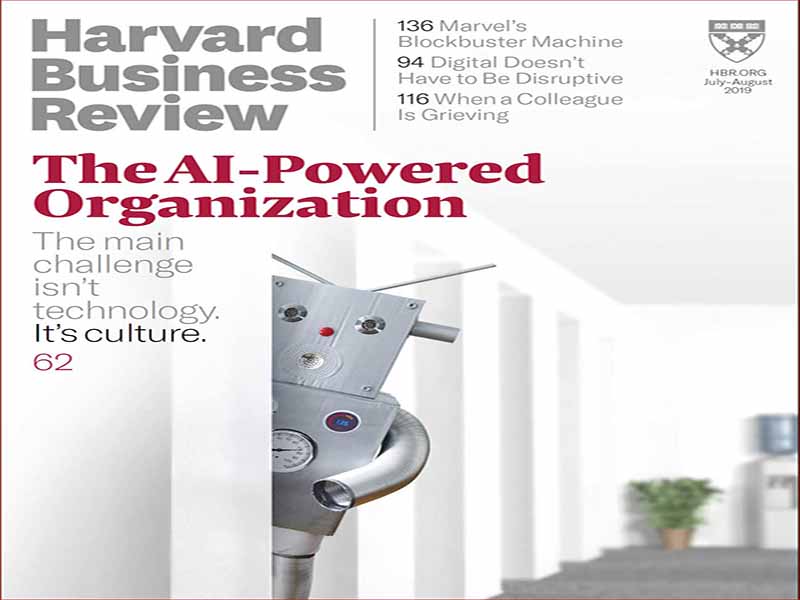- عنوان کتاب: The AI-Powered Organization
- نویسنده: Harvard Business Review
- حوزه: سازمان هوشمند
- سال انتشار: 2019
- تعداد صفحه: 168
- زبان اصلی: انگلیسی
- نوع فایل: pdf
- حجم فایل: 17.6 مگابایت
اخیراً، اخبار مملو از داستان های اختلاس، رشوه خواری، و انواع دیگر فسادهای شرکتی بوده است. در یک نظرسنجی در سال 2018، PwC دریافت که تقریباً نیمی از 7228 سازمان شرکتکننده، جرایم اقتصادی یا کلاهبرداری را در سال گذشته تجربه کردهاند که این رقم در سال 2009 30 درصد بود. و هزینه های قابل توجهی دارد: ارزش سهامداران را از بین می برد، منابع مدیریتی را تخلیه می کند و برندها را خدشه دار می کند، گاهی اوقات به طور غیرقابل جبرانی. همان نظرسنجی PwC همچنین نشان داد که بیش از نیمی از مجرمان یقه سفید «بازیگران داخلی» بودند – پدیدهای که پل هیلی و جورج سرافیم از مدرسه بازرگانی هاروارد در «چگونه شرکت خود را در مورد رسوایی اثبات کنید» (صفحه 42) بررسی میکنند. آنها استدلال می کنند که دلیل آن قوانین ضعیف یا سیستم های انطباق نیست. آنها میگویند در شرکتهایی که با رسواییها روبهرو شدهاند، «فرهنگ ساخت اعداد به هر قیمتی نگرانیها در مورد چگونگی دستیابی به اهداف را از بین برد.» ریشه همه اینها رهبری است: سرافیم و هیلی میگویند: «مدیران ارشد اکثر شرکتهایی که متحمل تخلفات تبلیغاتی شدید شدهاند، این حوادث را مسئولیت شخصی خود برای رسیدگی به آنها یا به عنوان مدرکی مبنی بر اینکه چیزی اساساً در سازمانهایشان اشتباه است، نمیدانستند. در حالی که این رهبران اهمیت انطباق را پذیرفتند، تأکید بیشتری بر غلبه بر رقبا و شگفتانگیز کردن سرمایهگذاران داشتند – پیامی که میتواند فرهنگ تخلف را تقویت کند. بنابراین، نباید تعجب آور باشد که عکس این موضوع نیز صادق است: رهبرانی که خود صداقت را در اولویت قرار می دهند، تمایل دارند سازمان هایی را اداره کنند که به هر قیمتی از برنده شدن جلوگیری می کنند و در این فرآیند، مشارکت کارکنان بالاتر و رشد سودآورتر را پرورش می دهند.
LATELY, THE NEWS has been filled with stories of embezzlement, bribery, and other kinds of corporate corruption. In a 2018 survey, PwC found that nearly half the 7,228 participating organizations had experienced economic crimes or fraud in the previous year—up from 30% in 2009. So it’s no exaggeration to say that white-collar crime is a growing problem. And it’s one that has considerable costs: It destroys shareholder value, drains management resources, and tarnishes brands, sometimes irredeemably. The same PwC survey also found that more than half the whitecollar criminals were “internal actors”—a phenomenon that Paul Healy and George Serafeim of Harvard Business School explore in “How to Scandal-Proof Your Company” (page 42). They argue that the cause isn’t weak regulations or compliance systems. At firms hit by scandals, they say, “a culture of making the numbers at all costs trumped any concerns about how the targets were being met.” The root of all this is leadership: “Senior executives at most companies that suffered highly publicized transgressions didn’t see these incidents as their personal responsibility to address or as evidence that something was fundamentally amiss in their organizations,” say Serafeim and Healy. While these leaders accepted the importance of compliance, they placed greater emphasis on beating competitors and wowing investors—a message that can foster a culture of wrongdoing. It shouldn’t come as a surprise, then, that the opposite is also true: The leaders who prioritize integrity themselves tend to run organizations that discourage winning at any cost and, in the process, cultivate higher employee engagement and more-profitable growth.
این کتاب را میتوانید از لینک زیر بصورت رایگان دانلود کنید:
Download: The AI-Powered Organization




































نظرات کاربران